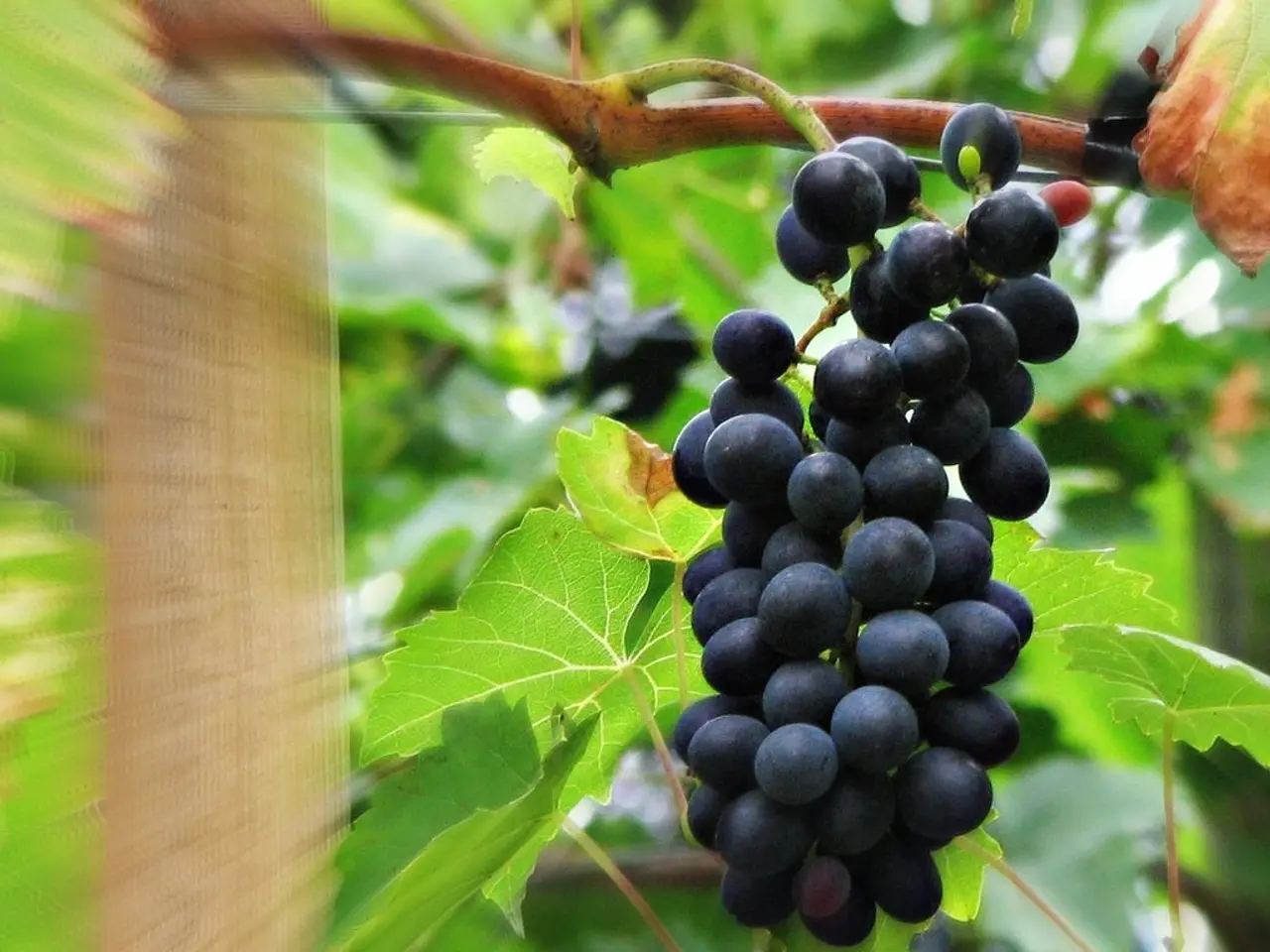Fungal Infestation Impacting Grapevines: Grape Powdery Mildew
In the vineyards of Ohio, grapevine growers face a common challenge: powdery mildew. This fungal disease, caused by the fungus Uncinula necator, can cause significant damage to grapevines and their produce. Here's a guide on how to effectively manage this disease.
Control Measures
Effective control of powdery mildew involves a combination of strategies. Proactive fungicide applications, combined with canopy management to reduce humidity and improve air circulation, form the backbone of any control programme.
Organic treatments can also play a role. Weekly sprays of a vinegar solution (4 cups water + ½ tablespoon vinegar) or milk diluted with water (40% milk) can help keep powdery mildew in check. Baking soda sprays are another option, as they raise leaf surface pH, inhibiting spore growth.
Overwintering and Infection Process
Unlike other common grape diseases like black rot and downy mildew, powdery mildew fungi overwinter primarily as dormant structures called cleistothecia or as mycelium in buds or perennial tissues. This allows early season inoculum to infect new growth. In contrast, downy mildew spores typically overwinter in fallen infected leaves on the ground, and black rot overwinters in mummified berries or infected canes.
Infection Factors
Powdery mildew infections are favoured by dense foliage and dry conditions, and do not require free water to infect. This makes powdery mildew prevalent in dry, dense canopies.
Rapid Disease Multiplication
Proactive management is critical due to the rapid disease multiplication once started. Monitoring for initial powdery mildew colonies and starting fungicide sprays every 7 to 14 days upon detection is recommended. Using protectant fungicides such as Manzate can help prevent initial infections, but other fungicide chemistries may be necessary after disease establishment.
Symptoms and Impact
The powdery mildew fungus can infect all green tissues of the vine. Severely affected fruit often split open, while severely affected leaves may curl upward during hot, dry weather. If blossom clusters are affected, the flowers may wither and drop without setting fruit. Affected berries may have patches of fungal growth on the surface or the entire berry may be covered with the white, powdery growth.
Infections on cluster stems often go unnoticed but can be very damaging, resulting in berry drop (shelling). The fungus produces another type of spore (conidia) over the infected area after six to eight days. On young shoots, infections are more likely to be limited, and they appear as dark-brown to black patches. Late in the season, many black specks may develop on the surface of infected areas. These are the sexual fruiting bodies (cleistothecia) of the fungus.
In the spring, airborne spores (ascospores) released from the cleistothecia are the primary inoculum for powdery mildew infections. The conidia serve as "secondary inoculum" for powdery mildew infection throughout the remainder of the growing season.
Temperatures of 68 to 77 degrees F are optimal for infection and disease development, although infection can occur from 59 to 90 degrees F. Infected berries often are misshapen or have rusty spots on the surface. Most mature ascospores are discharged within four to eight hours. Ascospores are carried by wind and germinate on any green surface on the developing vine, resulting in primary infections.
Almost all overwintering inoculum in the northeastern United States comes from cleistothecia, which overwinter primarily in bark crevices on the grapevine. Infections on cluster stems often go unnoticed, but can be very damaging, resulting in berry drop (shelling).
In summary, managing powdery mildew on grapevines in Ohio involves a combination of proactive fungicide applications, canopy management, and organic treatments. Understanding the overwintering and infection process, as well as the factors that favour its growth, is key to effective management. Regular monitoring and prompt action upon detection are essential to prevent the disease from rapidly multiplying within the canopy.
Adopting a home-and-garden approach, organic treatments like weekly vinegar and milk sprays, or baking soda sprays, can aid in the management of powdery mildew in garden settings, including home grapevines. When practicing pest management in vineyards, it's crucial to recognize that the powdery mildew fungi primarily overwinter as dormant structures on the vine, requiring proactive fungicide applications and canopy management for effective control.




